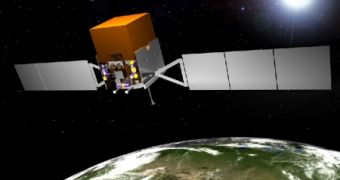NASA's GLAST satellite, or the Gamma-ray Large Area Space Telescope, set to study the universe at its highest energies was scheduled for launch on June 3rd, between 11:45 a.m. and 1:40 p.m. EDT from the Launch Complex 17 at NASA's Cape Canaveral Air Force Station. GLAST will be carried into space with the help of a Delta 7920H-10C rocket and inserted into a circular orbit around Earth, at an altitude of 550 kilometers, bearing an inclination of 28.5 degrees in relation to Earth's equator.
GLAST is now succeeding another NASA satellite, which was used between 1991 and 1999 to study high energy gamma-ray bursts coming from all over the universe, namely the Compton Gamma Ray Observatory. Mostly like the Compton Gamma Ray Observatory, GLAST will have the role of detecting and studying gamma-ray bursts with energies ranging between 10 MeV and 300 GeV, in order to unlock the secrets of galactic nuclei, black holes, blazars, pulsars, dark matter and other objects that may be able to determine bursts in that specific energy band.
NASA is joined in this mission by the US Department of Energy and the space agencies belonging to Japan, France, Germany, Sweden and Italy. It carries on board two scientific experiments in the form of the Large Area Telescope and the GLAST Burst Monitor. While the LAT instrument has the role of capturing gamma-ray bursts in the 30 MeV - 300 GeV energy band, the GBM instrument will make use of its scintillation detectors to capture bursts of photons with energies between 8,000 keV and 30 MeV.
The objectives of the mission consist in determining the basic mechanism through which subatomic particles are being accelerated within galactic nuclei, to identify the gamma-ray sources across the universe, determine the behavior of high energy gamma-ray bursts, find direct evidence of the existence of dark matter and last but not least, to find evidence of the existence of primordial black holes evaporating in space and their energy signatures left behind by Hawking Radiation.
GLAST has a missions spanning over five years, which may be expanded to ten in case the satellite performs as expected.

 14 DAY TRIAL //
14 DAY TRIAL //